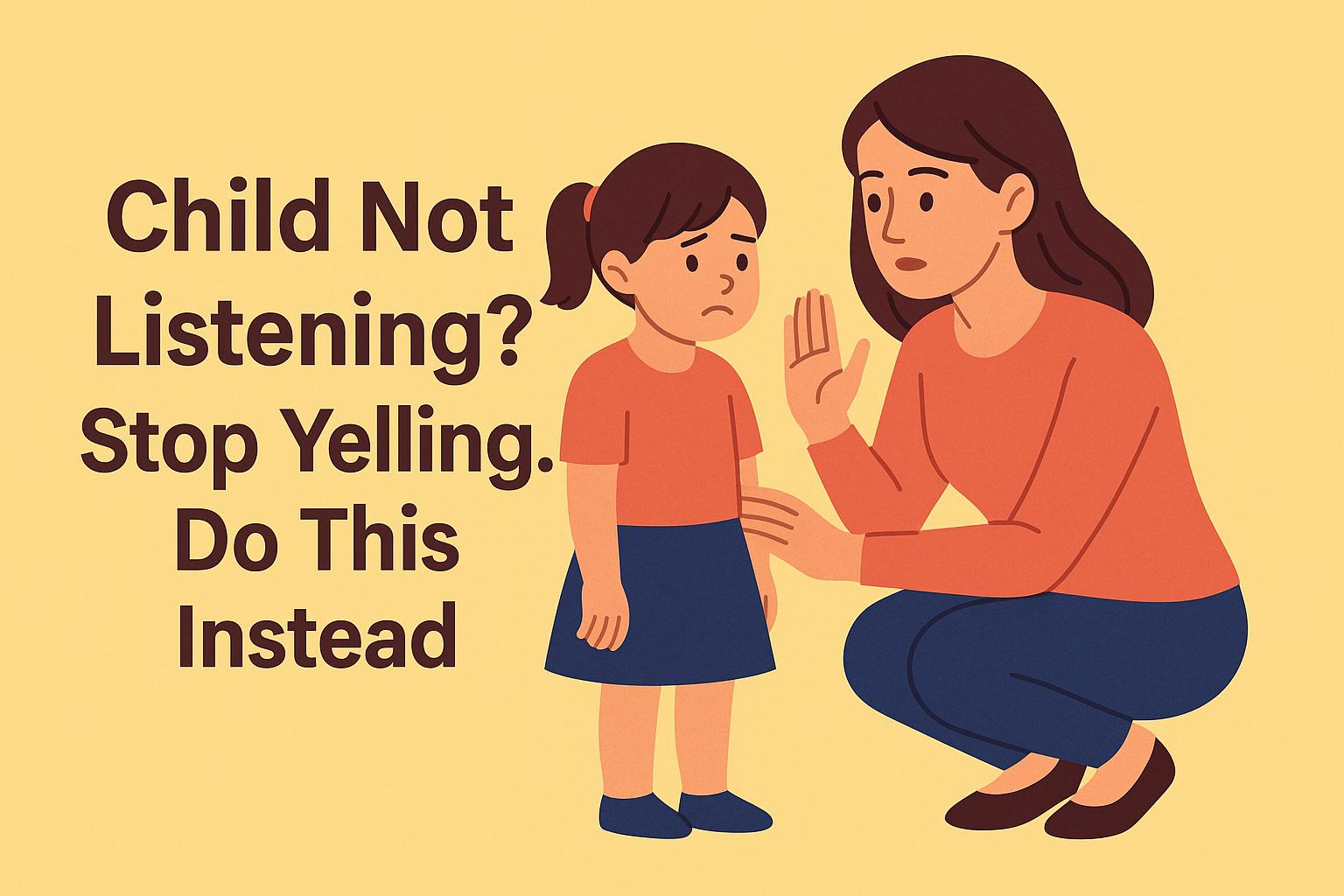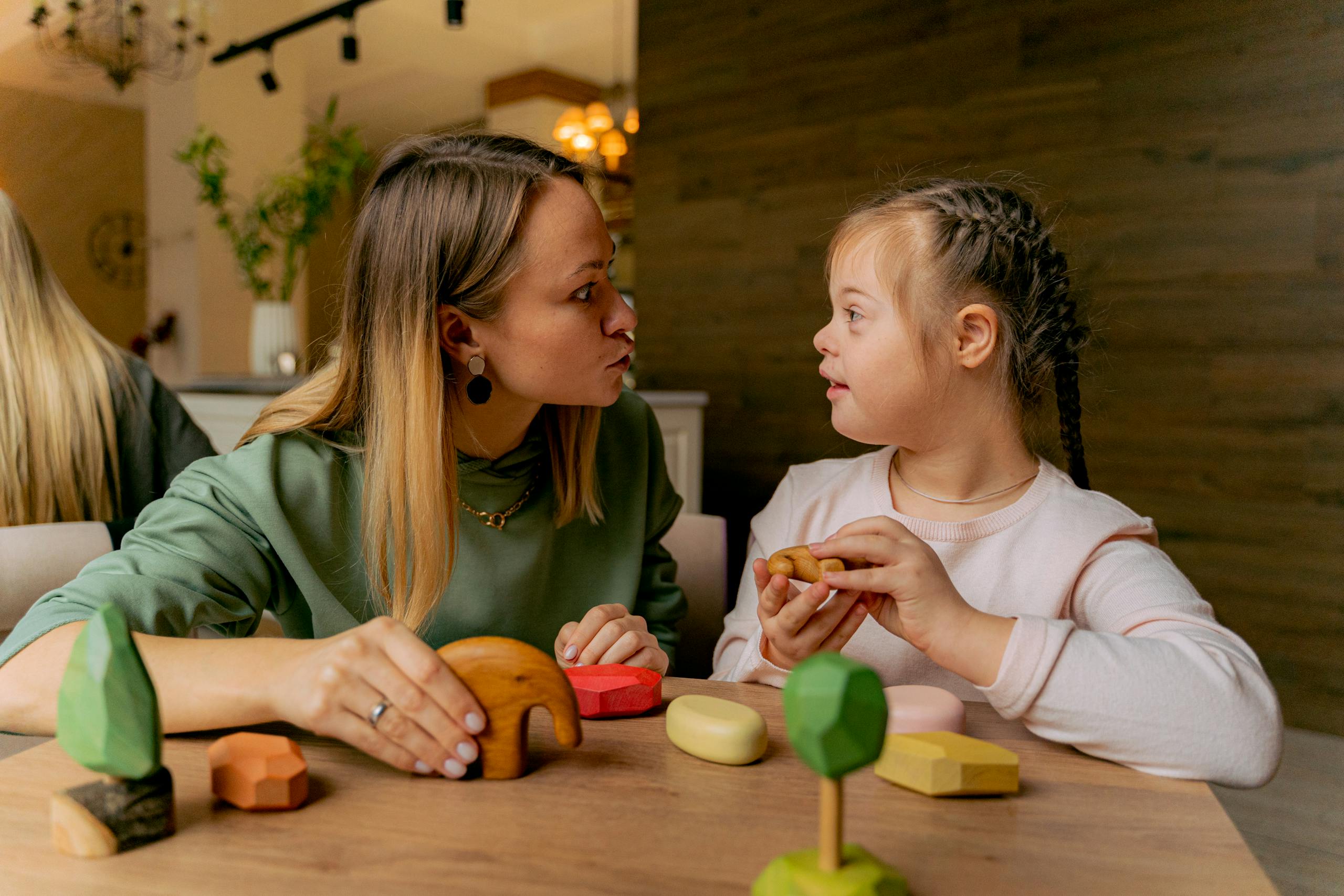Child Not Listening? Stop Yelling and Try These Positive Parenting Strategies
“When kids don’t listen, we often yell. We want obedience fast. But shouting isn’t the answer—it damages trust. You can get cooperation without raising your voice.”
I. The Problem with Yelling
Yelling at children is a common reaction—especially when we’re stressed, tired, or stuck in routine conflicts. But yelling often backfires:
- Erodes trust and emotional safety. When a parent raises their voice, a child may feel scared or shut down emotionally, which undermines their willingness to listen.
- Models aggression. Children learn how to address conflict by watching our behavior. Frequent yelling teaches them that aggression is acceptable when frustrated.
- Short-lived compliance. Yelling may lead to immediate compliance, but the effect is fleeting. Underlying feelings remain unaddressed—meaning the next conflict is just around the corner.
II. The Five-Step Alternative
While I don’t have each step from the video verbatim, many parenting experts recommend a structured, calm approach. A fair reconstruction might look like this:
- Pause and compose yourself. Take a moment to breathe deeply before responding. Resetting your emotions gives you a clearer head.
- Get down to their level. Physically lower yourself so you are eye-to-eye with the child. This signals respect and engagement.
- Use a calm, firm tone. Speak clearly and directly—but softly. The shift in energy can prompt better attention and cooperation.
- Offer choices or solutions. Instead of “Do this,” try “Would you like to do it now, or in five minutes?” Empowering options encourages ownership.
- Acknowledge feelings before enforcing. (“I understand you’re upset about stopping play—this must feel unfair.”) Validating feelings opens emotional connection; only then offer your expectation.

III. Why This Method Works
- Emotional regulation. When you respond calmly, you help normalize composure during conflict. This teaches children how to regulate their own emotions.
- Respect breeds respect. Getting on their level, offering choices, and using gentle language communicates that you see them as capable individuals. It encourages reciprocal respect.
- Understanding supports cooperation. Validating how a child feels doesn’t excuse the behavior. Rather, it clarifies that their emotions are heard—and that boundaries aren’t personal attacks.
IV. Real-World Application
Imagine a child refusing to get ready for school. Instead of shouting “Get your shoes on now!” a calmer method would be:
- Pause. Take a breath.
- Approach gently. Lower yourself to their eye level.
- Speak calmly. “I see you’re enjoying playing, and it’s hard to stop when you’re having fun.”
- Offer a choice. “Would you like to put your shoes on first or your jacket first?”
- Follow through. If they still refuse, remind them kindly, “When you’re ready, I’ll help you.”
Over time, this helps children internalize cooperation and feel more emotionally safe.
V. Broader Impacts on the Parent-Child Relationship
- Trust deepens. Children learn that even when there are expectations, they won’t be met with anger. That makes it easier to listen when it matters.
- Fewer power struggles. Calmer approaches reduce resistance, not by force but through connection.
- Long-term emotional health. Children who feel heard and treated with respect are more likely to develop empathy, self-discipline, and a stronger sense of self.
Here you get a helfpul video on that found on YouTube:
Conclusion
Yelling may feel like a quick shortcut to get children to listen—but it undermines emotional safety, invites more resistance, and teaches them that anger is the way to resolve conflict. A better alternative is a calm, structured five-step method (as hinted at in the video): pause, connect, speak calmly, offer choices, and empathize. This not only fosters cooperation in the moment but builds a deeper, longer-lasting bond of trust and respect.






